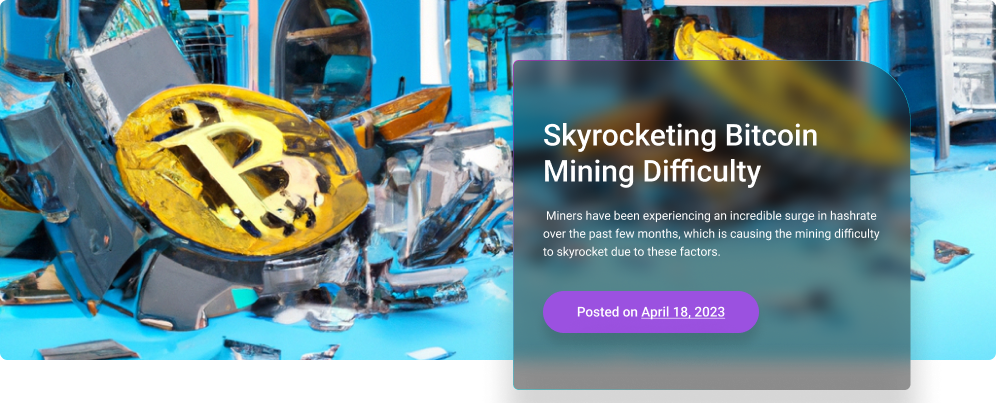A hashrate explosion. That’s what Bitcoin miners have experienced over the past few months. And like clockwork, Bitcoin mining difficulty is skyrocketing higher as well with no end in sight due to several factors:
- Growing network hashrate and more efficient miners: As more miners join the Bitcoin network, the total hashrate (computing power) dedicated to mining increases. Especially when those new miners are brining top of the line equipment online. This leads to a higher mining difficulty, as the protocol adjusts the difficulty to maintain a consistent block production rate of approximately one block every 10 minutes. The higher the network hashrate, the higher the difficulty.
- Advanced mining infrastructure and aftermarket firmware: Over time, miners have developed more powerful and efficient mining infrastructure and aftermarket firmware such immersion cooling/hydrocooling and LuxOs. The combination of these two developments has allowed miners to push there existing hardware harder for longer while limiting wear and tear.
- Rising Bitcoin price: As the value of Bitcoin increases, mining becomes more profitable, which attracts more miners to the network. This, in turn, increases the network hashrate as less efficient miners become profitable along with mining difficulty. The higher the Bitcoin price, the more likely it is that mining difficulty will continue to rise.
- Global adoption, awareness, and the hunt for the lowest electric rate: The growing global adoption of cryptocurrencies, including Bitcoin, leads to a higher demand for mining resources – especially readily available and inexpensive electricity. As more people become aware of the potential benefits of mining, they are more likely to invest in mining hardware and join the network, thus contributing to the increase in mining difficulty.
- Decreasing block rewards: Every four years, Bitcoin undergoes a “halving” event, where the block reward (newly minted bitcoins) given to miners for successfully adding a new block to the blockchain is reduced by 50%. As block rewards decrease, miners need to become more efficient to remain profitable, which can lead to an increase in mining difficulty as miners compete for the reduced rewards.
It’s important to note that the increase in mining difficulty is an inherent feature of the Bitcoin protocol to ensure a stable and secure network. By adjusting the difficulty, the network ensures that the rate of block production remains consistent despite fluctuations in the total mining power.
Skyrocketing Bitcoin Mining Difficulty

